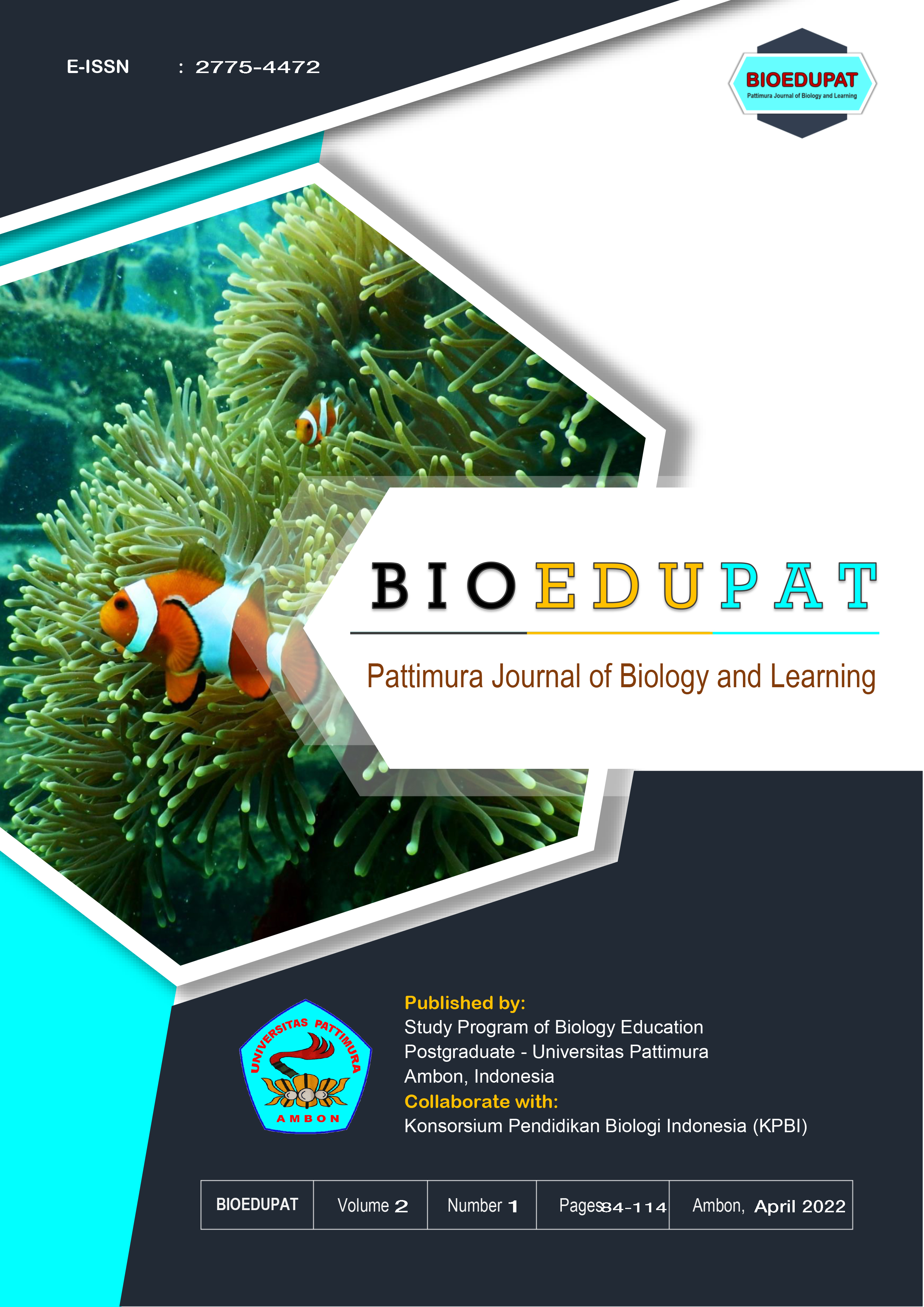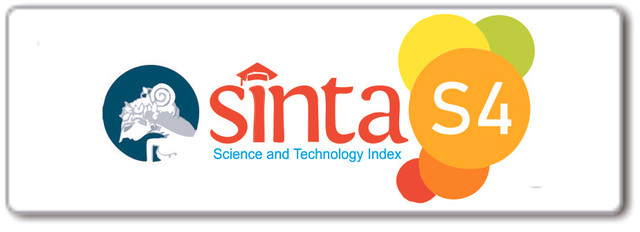The effect of picture and picture learning model on learning outcomes of junior high school madani makassar students
Abstract
The picture and picture learning model is a learning strategy through the use of image media as learning media which are paired and sequenced logically. This learning model involves students to participate in learning activities that are innovative, creative, and fun. In addition, the picture and picture learning model is to organize the learning experience so that it can be used as a reference or guide for learning designers and teachers in planning teaching and learning activities. This research is an experimental and non PTK research. The data from this study were analyzed through descriptive statistical analysis and independent T-test which were first carried out by the process of normalization and homogenization of data. This study aims to examine the effect of the picture and picture learning model in improving learning outcomes at Madani Junior High School Makassar. The results showed that the picture and picture learning model had a significant influence on the learning outcomes of class VII Junior High School Madani Makassar. This learning model has proven to be effective in providing opportunities for students to work together with fellow students through structured, group tasks, so that open interactions and effective interdependence relationships occur among various group members.
Downloads
References
Fitriani, A., Indrowati, M., & Karyanto, P. (2015). Students' critical thinking skills in biology learning through the application of accelerated learning for class X SMA Negeri Karangpan dan Karanganyar. Journal of Biological Education, 7(2), 56–67.
Gusviani, E. (2016). Analysis of the emergence of spiritual attitudes and social attitudes in science learning activities for grade IV SD using KTSP and the 2013 curriculum. Eduhumaniora, 7(2), 1–10.
Huda, M., 2013. Teaching and Learning Models. Yogyakarta: Student Library
Heong, Y. M, Othman, W., Yunos, J. B. M., Kiong, T., Hassan, R., & Mohamad, MM (2011). The level of Marzano higher-order thinking skills among technical education students. International Journal of Social Science and Humanity, 1(2), 121–125.
Huda, M., & Rahman, L. (2020). The relationship between critical thinking skills and learning outcomes of elementary school students. Journal of Character Education: Journal of Child and Character Education, 2(2), 42–47.
Husnah, M. (2017). The relationship between the level of critical thinking on student physics learning outcomes by applying the problem-based learning model. Journal of Physics and Science Learning, 1(2), 1–12.
Istarani, 2011. A joint article on elementary learning design. West Java: CV Jejak publisher, member of IKAPI.
Insyasiska, D., Zubaidah, S., & Susilo, H. (2015). The effect of project-based learning on learning motivation, creativity, critical thinking skills, and cognitive abilities of students in biology learning. Journal of Biological Education, 7(1), 9–21.
Istiyono, E., Mardapi, D., & Suparno, S. (2014). Development of high-level physics thinking skills test (PysTHOTS) of high school students. Journal of Educational Research and Evaluation, 18(1), 2–5.
Kurniasih, I. & Sani, B., 2015. Variety of Learning Model Development to Improve Teacher Professionalism, Jogjakarta: The word pen.
Klein, J., Taveras, S., King, SH, Commitante, A., Bey, LC., & Stripling, B. (2009). A Guide To project-based learning in middle schools: Inspiring students to engage in deep and active learning. NYC Department of Education.
Kusuma, M., Rosidin, U., Abdurrahman., & Suyatna, A. (2017). The Development of higher-order thinking skill (HOTS) assessment instrument in physics study. Journal of Research & Method in Education, 7(1), 26–32.
Leiwakabessy, F., Hetharia, M., & Manuputty, R. (2018). Development of biological teacher capabilities in the development of test instruments based on high order thinking skills (HOTS) In high school in Ambon city that have applied 2013 Curriculum. Proceeding Book of The 3rd International Seminar on Education November 07th, 2, 76–86.
Listiani, S., & Purwanto, A. (2018). The application of a project-based learning model using used goods to improve students' scientific attitudes. Proceedings of the Seminar and National Discussion on Basic Education, 24–29.
Lukitasari, M., Handhika, J., & Murtafiah, W. (2018). Higher-order thinking skills: Using e-portfolio in project-based learning. In Journal of Physics: Conference, 983(12047), 1–7.
Nurlianti, Tilora, M.N., 2020. Implementation of the Picture And Picture Learning Method by a Fiqh Teacher at Madrasah Ibtidaiyah Al-Rasyid Simpang Tiga Sungai Luar, Batang Tuaka District. Journal of PGMI Partners. 6(1):38-49
Narahaubun, S. S, Rehena, J. F., & Rumahlatu, D. (2020). Empowering students' critical thinking skills, information literacy, and cognitive learning outcomes through the RBL-TPS model. Indonesian Journal of Biological Education, 6 (2), 243–256. https://doi.org/10.22219/jpbi.v6i2.11456
Primandari, P., Sulasmono, B. S., & Setyaningtyas, E. (2019). The difference in the effect of the cooperative model type TGT and STAD with cheerful interactive multimedia on social attitudes and cognitive learning outcomes in thematic learning in grade 5 SD. Basicedu's Journal, 3(3), 83–91.
Susanto, 2016. Theory of Learning and Learning in Elementary Schools. Jakarta: Prenada Media Group
Slamet. 2013. Learning and the factors that influence it. Jakarta: Rineka Cipta.
Yusal, M.S. & Carding, C., 2020. Improving Student Learning Outcomes Through Problem Posing Learning Methods at Makassar National High School. BIOMA: Journal of Biology and Its Learning, 2 (2): 60-66
Copyright (c) 2022 Muh Sri Yusal, Irnayanti Bahar, Bernadina Namul

This work is licensed under a Creative Commons Attribution-NonCommercial-ShareAlike 4.0 International License.
Authors who publish with BIOEDUPAT: Pattimura Journal of Biology and Learning agree to the following terms:
- Authors retain copyright and grant the journal right of first publication with the work simultaneously licensed under a Creative Commons Attribution License (CC BY-NC-SA 4.0) that allows others to share the work with an acknowledgment of the work's authorship and initial publication in this journal.
- Authors are able to enter into separate, additional contractual arrangements for the non-exclusive distribution of the journal's published version of the work (e.g., post it to an institutional repository or publish it in a book), with an acknowledgment of its initial publication in this journal.
- Authors are permitted and encouraged to post their work online (e.g., in institutional repositories or on their website) prior to and during the submission process, as it can lead to productive exchanges, as well as earlier and greater citation of published work.









 This work is licensed under a
This work is licensed under a 